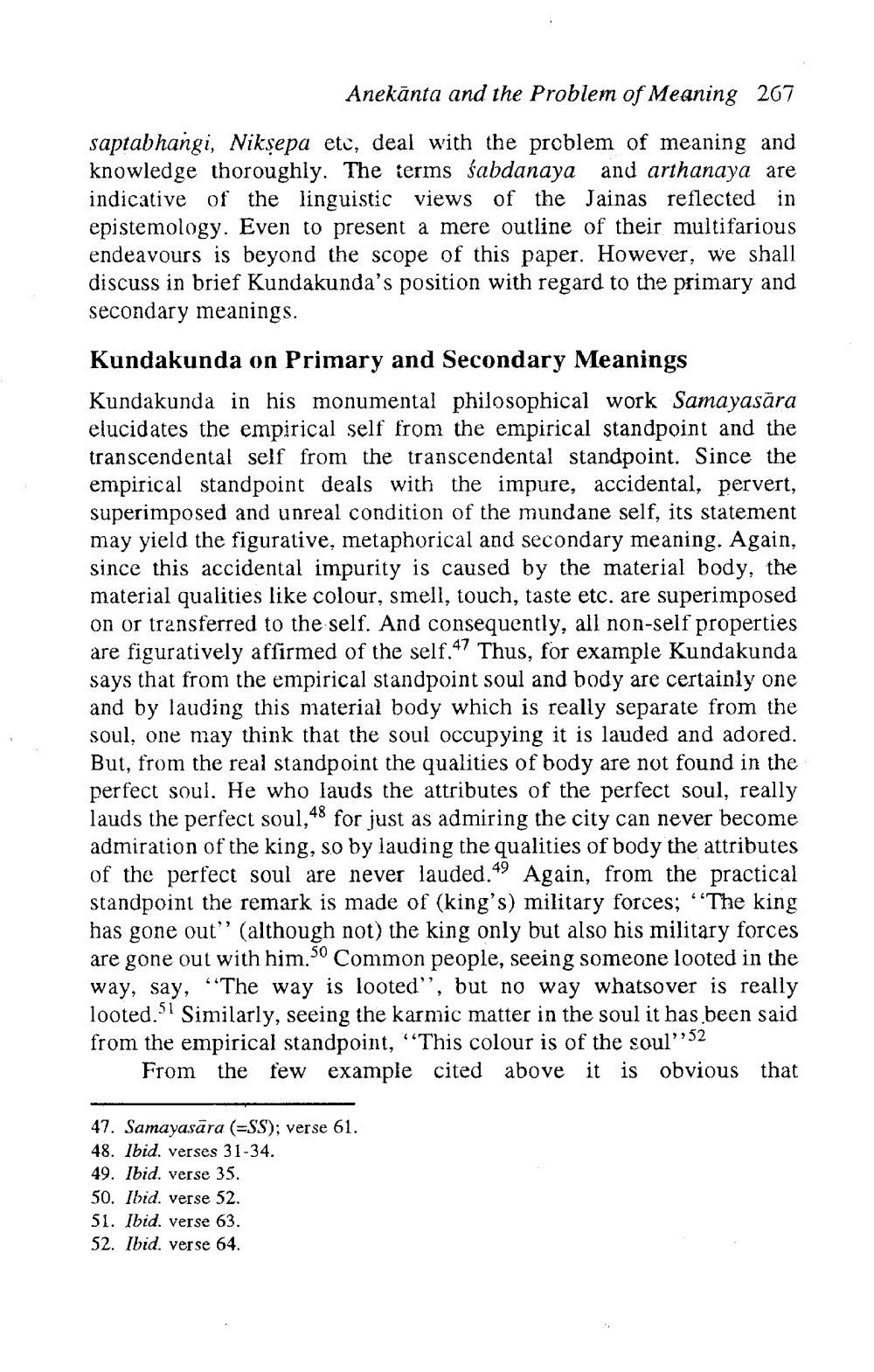________________
Anekānta and the Problem of Meaning 267
saptabhangi, Niksepa eto, deal with the problem of meaning and knowledge thoroughly. The terms sabdanaya and arthanaya are indicative of the linguistic views of the Jainas reflected in epistemology. Even to present a mere outline of their multifarious endeavours is beyond the scope of this paper. However, we shall discuss in brief Kundakunda's position with regard to the primary and secondary meanings.
Kundakunda on Primary and Secondary Meanings Kundakunda in his monumental philosophical work Samayasara elucidates the empirical self from the empirical standpoint and the transcendental self from the transcendental standpoint. Since the empirical standpoint deals with the impure, accidental, pervert, superimposed and unreal condition of the mundane self, its statement may yield the figurative, metaphorical and secondary meaning. Again, since this accidental impurity is caused by the material body, the material qualities like colour, smell, touch, taste etc. are superimposed on or transferred to the self. And consequently, all non-self properties are figuratively affirmed of the self.47 Thus, for example Kundakunda says that from the empirical standpoint soul and body are certainly one and by lauding this material body which is really separate from the soul, one may think that the soul occupying it is lauded and adored. But, from the real standpoint the qualities of body are not found in the perfect soul. He who lauds the attributes of the perfect soul, really lauds the perfect soul,48 for just as admiring the city can never become admiration of the king, so by lauding the qualities of body the attributes of the perfect soul are never lauded.49 Again, from the practical standpoint the remark is made of (king's) military forces; “The king has gone out”' (although not) the king only but also his military forces are gone out with him." Common people, seeing someone looted in the way, say, “The way is looted, but no way whatsover is really looted. Similarly, seeing the karmic matter in the soul it has been said from the empirical standpoint, “This colour is of the soul''32
From the few example cited above it is obvious that
47. Samayasāra (=SS); verse 61. 48. Ibid. verses 31-34. 49. Ibid. verse 35. 50. Ibid. verse 52. 51. Ibid. verse 63. 52. Ibid. verse 64.




